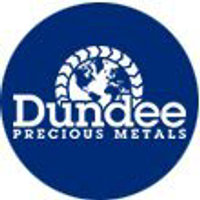
Dundee Precious Metals Inc
TSX:DPM
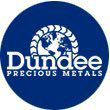

| US |

|
Fubotv Inc
NYSE:FUBO
|
Media
|
| US |

|
Bank of America Corp
NYSE:BAC
|
Banking
|
| US |

|
Palantir Technologies Inc
NYSE:PLTR
|
Technology
|
| US |
C
|
C3.ai Inc
NYSE:AI
|
Technology
|
| US |

|
Uber Technologies Inc
NYSE:UBER
|
Road & Rail
|
| CN |

|
NIO Inc
NYSE:NIO
|
Automobiles
|
| US |

|
Fluor Corp
NYSE:FLR
|
Construction
|
| US |
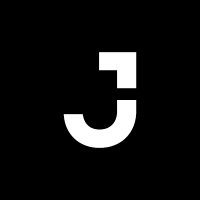
|
Jacobs Engineering Group Inc
NYSE:J
|
Professional Services
|
| US |

|
TopBuild Corp
NYSE:BLD
|
Consumer products
|
| US |

|
Abbott Laboratories
NYSE:ABT
|
Health Care
|
| US |

|
Chevron Corp
NYSE:CVX
|
Energy
|
| US |
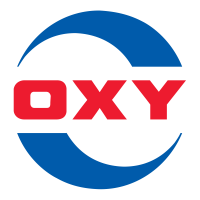
|
Occidental Petroleum Corp
NYSE:OXY
|
Energy
|
| US |
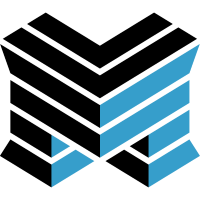
|
Matrix Service Co
NASDAQ:MTRX
|
Construction
|
| US |
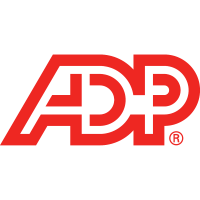
|
Automatic Data Processing Inc
NASDAQ:ADP
|
Technology
|
| US |

|
Qualcomm Inc
NASDAQ:QCOM
|
Semiconductors
|
| US |

|
Ambarella Inc
NASDAQ:AMBA
|
Semiconductors
|
Utilize notes to systematically review your investment decisions. By reflecting on past outcomes, you can discern effective strategies and identify those that underperformed. This continuous feedback loop enables you to adapt and refine your approach, optimizing for future success.
Each note serves as a learning point, offering insights into your decision-making processes. Over time, you'll accumulate a personalized database of knowledge, enhancing your ability to make informed decisions quickly and effectively.
With a comprehensive record of your investment history at your fingertips, you can compare current opportunities against past experiences. This not only bolsters your confidence but also ensures that each decision is grounded in a well-documented rationale.
Do you really want to delete this note?
This action cannot be undone.

| 52 Week Range |
7.98
14.55
|
| Price Target |
|
We'll email you a reminder when the closing price reaches CAD.
Choose the stock you wish to monitor with a price alert.

|
Fubotv Inc
NYSE:FUBO
|
US |

|
Bank of America Corp
NYSE:BAC
|
US |

|
Palantir Technologies Inc
NYSE:PLTR
|
US |
|
C
|
C3.ai Inc
NYSE:AI
|
US |

|
Uber Technologies Inc
NYSE:UBER
|
US |

|
NIO Inc
NYSE:NIO
|
CN |

|
Fluor Corp
NYSE:FLR
|
US |

|
Jacobs Engineering Group Inc
NYSE:J
|
US |

|
TopBuild Corp
NYSE:BLD
|
US |

|
Abbott Laboratories
NYSE:ABT
|
US |

|
Chevron Corp
NYSE:CVX
|
US |

|
Occidental Petroleum Corp
NYSE:OXY
|
US |

|
Matrix Service Co
NASDAQ:MTRX
|
US |

|
Automatic Data Processing Inc
NASDAQ:ADP
|
US |

|
Qualcomm Inc
NASDAQ:QCOM
|
US |

|
Ambarella Inc
NASDAQ:AMBA
|
US |
This alert will be permanently deleted.
 Dundee Precious Metals Inc
Dundee Precious Metals Inc





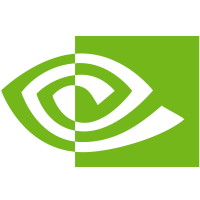
 You don't have any saved screeners yet
You don't have any saved screeners yet

Ladies and gentlemen, thank you for standing by. Welcome to the Dundee Precious Metals Fourth Quarter and Year-end 2020 Results Conference Call. [Operator Instructions] I would now like to hand the conference call to Jennifer Cameron. You may begin.
Thank you, and good morning. I'm Jennifer Cameron, Director, Investor Relations, and I'd like to welcome you to Dundee Precious Metals fourth quarter conference call. With me today are David Rae, President and CEO; and Hume Kyle, Chief Financial Officer; as well as Michael Dorfman, Executive Vice President, Corporate Development, who will be commenting on the results and answering your questions. At the close of business yesterday, we released our fourth quarter and annual results and hope you've had an opportunity to review our material. All forward-looking information provided during the call is subject to forward-looking qualification, which is detailed in our news release and incorporated in full for the purposes of today's call. Certain financial measures referred to during this call are not measures recognized under IFRS and are referred to as non-GAAP measures. These measures have no standardized meaning under IFRS, and may not be comparable to similar measures presented by other companies. The definitions established and calculations performed by DPM are based on management's reasonable judgment and are consistently applied. These measures are intended to provide additional information and should not be considered in isolation or as a substitute for measures prepared in accordance with IFRS. Please refer to the non-GAAP financial measures section of our most recent MD&A for reconciliations of these non-GAAP measures.Please note that unless otherwise stated, operational and financial information communicated during this call have generally been rounded and references to 2019 pertain to the comparable periods in 2019 and references to averages are based on midpoints of our outlook or guidance.I'll now turn the call over to David Rae.
Good morning, everybody. Thank you for joining us. I'm pleased to provide you with an overview of our fourth quarter and full year 2020 results and provide some insights into our achievements over this period.It's normally my pleasure to begin my commentary by speaking about our strong safety record. But that's sadly not the case for Q4 2020. As we previously announced in November, we had a fatality at our smelter operation in Namibia as a direct consequence of the breach of our golden rules for safety. One of our colleagues, Andreas Shiimi sustained fatal injuries while performing maintenance on a piece of equipment. We're providing support to Mr. Shiimi's family, including his 5 children throughout this difficult time. The safety and well-being of our people is our highest priority, and we're focused on applying what we have learned from this incident across the organization to ensure every employee arrives home safely each day.Goes without saying that 2020 was very challenging around the world as a result of the COVID-19 pandemic. I'm particularly proud of how our team adapted to the unprecedented challenges of the pandemic and the steps we've taken to safeguard the health and safety of our workforce. And our local communities, all while continuing to deliver exceptional results in a challenging environment.In 2020, we contributed approximately $1 million in support of a number of initiatives. Largely focused on assisting local hospitals by providing additional medical facilities, supplies, transportation and medical equipment.Turning now to our results. 2020 was another milestone year for DPM, across a number of areas. We delivered strong operational performance with all our operations meeting or exceeding their annual guidance and achieved a new record for gold production of 298,000 ounces. Each of our operations delivered strong cost performance with overall all-in sustaining costs for the year of $654 per gold ounce, at the low end of our revised guidance. We generated record financial results, including $211 million of free cash flow and $193 million in adjusted net earnings. We significantly strengthened our balance sheet, ending the year with $150 -- $150 million of cash, no debt and over $100 million of investments. And we delivered all remaining ounces under our prepaid gold sales arrangement, which is expected to positively impact our 2021 free cash flow. We advanced the pre-feasibility study at Timok and plan to release the results during the first quarter. We also continue to advance our exploration activities at Ada Tepe and Chelopech. We reached an agreement to sell our interest in MineRP for approximately $40 million in cash payable on closing and potential additional payments in the form of an earn out. We completed a 9.9% investment in Velocity Minerals, a gold exploration and development company with projects in Southeast Bulgaria and close to Ada Tepe. And we increased our quarterly dividend by 50% to $0.03 per share, an increase that reflects our strong free cash flow generation. We were pleased to see that our significant achievements in 2020 were recognized by the market, with our share price increasing by approximately 64% in 2020, outperforming both the GDXJ and the GDX indices. For those following -- looking at the presentation, I'm now on to the climate change report slide. We continue to focus on generating value through our strong ESG performance. In December, we published our inaugural climate change report. This report follows TCFD recommendations and outlines our efforts to achieve reductions in energy, water use, emissions and our consumption of raw materials. We're continually striving to be an ESG leader, which is demonstrated by the positive ratings DPM has received from ESG rating agencies, including an A rating by MSCI. Turning to our operating performance and the highlights. I'll start with Ada Tepe. So since ramping up to full production last year, our operating team at Ada Tepe has continued to develop impressive -- sorry, deliver impressive results ahead of our expectations, a rare accomplishment in our industry. In the first year of operation, Ada Tepe produced approximately 119,000 gold ounces and exceeded its guidance for the year, demonstrating its potential to drive strong operating results within our portfolio. In Q4, Ada Tepe produced approximately 26,000 gold ounces, which was in line with expectations for the quarter. With cash costs of $42 per tonne of ore processed during the quarter and $40 per tonne for the year, Ada Tepe outperformed our cost expectations for the year, coming in below guidance for reasons which Hume will discuss shortly. We're continuing with our exploration efforts around Ada Tepe. And in the fourth quarter, we conducted a significant extension of an infill drilling program at the Surnak and Synap prospects, which are located approximately 3 kilometers southwest of the mine. During this year, we also completed approximately 6,000 meters of target delineation and infill drilling at Chatal kaya. As part of our sustained efforts to support an extension of the Ada Tepe mine life, exploration will continue to focus on the delineation and optimization at near mine prospects during 2021. This year, we're planning approximately 23 kilometers of drilling at Ada Tepe, including 9,000 meters for additional resource and conceptual target extension on the mine concession as well as advancing the Chatal kaya and other prospects in regional licenses. Turning to Chelopech. Chelopech continued its track record of consistent performance, producing approximately 179,000 ounces of gold and 36 million pounds of copper. In Q4, Chelopech produced over 38,000 ounces of gold and 7.6 million pounds of copper, in line with our expectations for the quarter. Cost performance continues to be steady and in line with expectations, with cash cost of $38 per tonne of ore processed for both the quarter and the year, which was at the low end of guidance for 2020. We also continue to focus on extending the mine life through our in mine and brownfield exploration programs. And at the West Shaft prospect, which is located approximately 1 kilometer southwest of the Chelopech mine, an intensive diamond drilling exploration program began in the second half of 2020 with delineation and extension at depth ongoing. Additionally, a second feeder structure has been inferred to the south and will be tested in early 2021. Deep directional drilling is also continuing at the Wedge prospect, with a focus on testing more conceptual targets. Additional resource delineation commenced in early 2021 and aims to support our plans to secure the rights of the Sveta Petka exploration license by means of converting the license into a commercial discovery. In 2021, we have approximately 38 kilometers of drilling planned concentrated on near-mine exploration drilling related to the Sveta Petka commercial discovery process, which includes the West Shaft and Wedge targets and on drilling more conceptual targets, including Bridge and Vozdol on the Brevene exploration license. We're also planning approximately 40,000 meters of in mine exploration drilling for resource development. The Tsumeb smelter processed approximately 232,000 tonnes of complex concentrate in 2020 and approximately 52,500 tonnes of complex concentrate in Q4. For the year, Tsumeb met its annual guidance despite the operation being impacted by a 30-day reduction in throughput related to COVID-19 during the second quarter, and downtime associated with our activities post the fatality in November. For 2021, a 30-day of smelt reline shutdown is assumed in the guidance provided. This outage will be completed within Q1 2021. Looking further out, our strong 2020 results demonstrate our ability to deliver significant free cash flow and our commitment to deploying this capital in a disciplined manner. Looking forward, we expect another strong year in 2021 and that we provided our detailed guidance for 2021, which includes higher production and improved costs relative to our previous 3-year outlook. This reflects current mine plans, including the optimized mine plan for Ada Tepe, which we announced in October. The updated 3-year outlook highlights our strong gold production profile, attractive all-in sustaining costs and declining sustaining capital expenditures and positions us well to continue delivering strong results and returns for our shareholders.In terms of future growth, our Timok project in Serbia is advancing. We advanced the prefeasibility, and we look forward to sharing the results later in the first quarter. In October, we were pleased to be investing further in gold exploration in Southeastern Bulgaria through our equity financing in Velocity Minerals. Given our strong presence and capabilities in the region, we believe that we are uniquely positioned to support Velocity as a strategic shareholder. And recently, in January, we increased our position in INV Metals to 23.5%. We also continue to pursue our growth strategy by evaluating additional opportunities that have the potential to generate strong returns and enhance the value of the company.Before I wrap up, I'd like to acknowledge all of our dedicated employees across the company for their outstanding efforts to proactively respond to the challenges of COVID-19, while also maintaining the continuity of our operations. Overall, DPM has never been in a better position to deliver value for our shareholders and other stakeholders, and I'm very excited about the future. Our strong gold production profile and free cash flow generation, combined with our unique skills and innovation and building strong partnerships with local communities, position us well to continue delivering value for our shareholders. And I'll now turn the call over to Hume for a review of our financial results and comment on our 2021 guidance and 3-year outlook, following which we will open the call to questions.
Thanks, Dave. Good morning, everybody. As Dave noted, with continued strong operational performance from our mining operations, which delivered record gold production, together with higher gold prices, we generated record net earnings and free cash flow. With the recently announced sale of MineRP which was reported as a discontinued operation in our year-end results, my comments today will focus solely on results from continued operations. For the quarter, adjusted net earnings were $47 million or $0.26 per share. This represented an increase of $0.17 per share compared to 2019. EBITDA or adjusted EBITDA was $75 million, up $21 million compared to 2019. Adjusted net earnings for 2020 were $193 million or $1.07 per share, representing an increase of $0.87 compared with 2019. Adjusted EBITDA was $319 million, up $179 million compared with 2019. Reported earnings in 2020 were slightly higher than our adjusted earnings due to mark-to-market gains related to Sabina special warrants that we hold. While the reported net earnings in 2019 were lower as a result of $107 million charge -- $107 million impairment charge, sorry, taken in respect of Tsumeb in the fourth quarter of 2019. Relative to 2019, the fourth quarter results benefited from a 23% increase in gold prices and a 21% increase in copper prices. Lower treatment charges at Chelopech, reflecting increased gold copper concentrate deliveries to third-party smelters and higher volumes of complex concentrate smelted at Tsumeb, due primarily to extended furnace maintenance that was undertaken in 2019. These benefits were partially offset by lower volumes of gold sold, due solely to the timing of deliveries in the fourth quarter of 2019. Relative to 2019, our year-over-year results benefited from a 37% increase in gold sold reflecting Ada Tepe's impressive startup, which resulted in higher production and grades than originally expected as well as continued strong performance from our flagship Chelopech mine. Our results also benefited from a 21% increase in gold prices relative to 2019 levels. A weaker South African rand, which on average depreciated roughly 14% relative to the U.S. dollar and higher volumes of complex concentrates smelted at Tsumeb. Cash flow from operating activities in Q4 in 2020 were $71 million and $197 million, respectively, up from $51 million and $97 million in 2019, reflecting the same factors that drove increased earnings. 2020 cash flows from operating activities also reflect an increase in noncash working capital of approximately $50 million. This related to timing of deliveries, higher metal prices and longer settlement terms for Ada Tepe sales as well as the settlement of our prepaid forward gold sales arrangement, resulting in approximately $10 million and $47 million of deferred revenue being recognized with no corresponding contribution to cash flow in the fourth quarter and annual results.The final delivery of gold under this arrangement was made in December. Funds from operation, which is before changes in working capital were $50 million and $249 million in Q4 in 2020, up from $33 million and $113 million in 2019. The solid performance translated into free cash flow of $39 million and $211 million in Q4 in 2020 compared with $12 million and $70 million in 2019. Turning to our key consolidated cash measures. Our all-in sustaining cost per ounce for Q4 in 2020 was $651 and $654, respectively, down 4% and 10% from 2019 levels. The year-over-year decrease was due primarily to increased low-cost production from Ada Tepe, partially offset by higher share-based compensation as a result of strong share price performance as well as higher sustaining capital expenditures, reflecting a full year of operation and an accelerating grade control drilling program at Ada Tepe. At Tsumeb, our Q4 in 2020 cost per tonne was $406 and $377, down 13% and 10% from 2019 levels, due primarily to higher complex volumes smelted, reflecting reduced 2020 maintenance and steady operating performance, and this was partially offset by a government-initiated COVID-related regional curtailment in the second quarter as well as the weaker ZAR. From a capital expenditure standpoint, capital expenditures in the quarter and for 2020 were $16 million and $49 million. Sustaining capital expenditures for Q4 were $12 million, down $6 million from 2019 due to the maintenance shutdown at Tsumeb. For 2020, sustaining capital expenditures were $41 million, up $4 million from 2019 as a result of Ada Tepe's full year of operation as well as the decision to embark on the accelerated drill grade control drilling program, which was partially offset by reduced spending in Tsumeb. Growth capital for Q4 in 2020 were $3 million, up $2 million from 2019. For the year, growth capital expenditures were $8 million, down from $29 million in 2019 as a result of the completion of constructing the Ada Tepe mine.Turning to our balance sheet. We significantly increased our financial strength in 2020 and ended the year with cash resources in aggregate of $300 million is comprised of $150 million of cash as well as an undrawn $150 million lie under our long-term revolving credit facility. We also have a liquid portfolio, providing additional upside. This is comprised of a 9.4% interest in Sabina, a 19.4% interest in INV and a 9.9% interest in Velocity which in aggregate, are valued at approximately $107 million at year-end or just over $110 million after taking into account the additional investment we made in INV in January. From a risk management perspective, all of our key financial metrics and underlying financial exposures are well within the established tolerance levels that we have set. Based on current hedge positions, approximately 80% of Tsumeb's projected operating costs have been hedged for 2021, using 0 cost collars, locking in a weighted average floor and ceiling exchange rate of $15.77 and $18.58, respectively. Also, approximately 69% of 2021 payable copper has been hedged at a weighted average price of $3.61. Each of these hedges serves to reduce the variability of our reported cost measures. Looking forward, DPM continues to focus on increasing the profitability of the business by operating each of our existing operating assets, which are expected to maintain higher levels of gold production and declining all-in sustaining costs as highlighted in our 3-year outlook and our more detailed 2021 guidance. I would also note that our production outlook and cost estimates for 2022 and 2023 did not yet incorporate any cost-saving initiatives. Nor do they reflect operating performance improvements or potential improvements and no recoveries in mine grades, each of which are based on existing life-of-mine grade levels. With that said, over the next 3 years, we expect gold production to average approximately 280,000 ounces over the next 3 years, with combined output in 2021 and '22, up roughly 2% from our previous outlook, in 2023, up another 4%. Copper production is expected to be in line with 2020, with volumes remaining stable throughout the period. All-in sustaining costs are expected to average roughly $700 million -- or sorry, $700 per ounce with 2021 lower and 2022 higher than our previous outlook and 2023 expected to trend lower following the completion of the upgrade of Chelopech's tailings management facility. Smelter operating performance is expected to improve, but throughput varying based on an 18-month furnace maintenance cycle. Over the next 2 years, throughput is expected to be similar with maintenance scheduled to take place in Q1 of 2021 and in or around the fourth quarter of 2022 versus an early '23 in our prior outlook. Throughput will then increase in 2023 as a result of the next furnace maintenance not being scheduled until 2024. Cash cost per tonne of concentrate smelted is expected to increase by roughly $40 to $50 or 10% compared with our previous outlook due primarily to asset prices. And as a result, is expected to average somewhere between $450 to $500 over the next 3 years. Sustaining capital is expected to increase in 2021 and 2022 compared to our previous outlook, averaging approximately $54 million, reflecting accelerated life-of-mine grade control drilling at Ada Tepe, the upgrade of Chelopech's tailing facility and the shifting of furnace maintenance at Tsumeb from early 2023 to later in 2022. Thereafter, sustaining capital will trend lower in 2023, which is expected to decline to $33 million to $44 million, a level that is more representative of the long-term range. In terms of our 2021 detailed guidance, gold production is expected to be between 271,000 and 317,000 ounces, reflecting 115,000 to 141,000 ounces from Ada Tepe, with the balance coming from Chelopech. Payable gold is expected to be between 243,000 and 285,000 ounces. Copper production is expected to be between 34 million and 39 million pounds, and payable copper sold is expected to be between 31 million and 36 million pounds. At Tsumeb, complex concentrate is expected to be between 220,000 and 250,000 tonnes, reflecting the scheduled maintenance shutdown, which is about to get underway. From a cost perspective, our all-in sustaining cost per ounce of gold sold is expected to be between $625 and $695, with higher than expected -- sorry, with higher expected sustaining capital expenditures being offset by higher copper byproduct projects -- prices and lower treatment charges with some of Chelopech's copper concentrate being delivered to third-party smelters. Cash cost per tonne of complex concentrate smelted is expected to be between $450 and $520, reflecting the planned furnace maintenance as well as forecasted weak asset prices. On the capital expenditure front, as mentioned earlier, sustaining capital expenditures for 2021 are expected to increase to a range of $56 million to $72 million. This is up from $41 million in 2020. Growth capital expenditures for 2021 are also expected to be between $16 million and $21 million. These growth capital expenditures relate primarily to a potential feasibility study for the Timok gold project, resource drilling and margin improvement projects. Exploration expenditures for 2021 are expected to be between $13 million and $15 million and will focus primarily on drill programs, on ore mine concessions and exploration licenses in and around Chelopech, Ada Tepe and the Timok gold project in Serbia. Evaluation expenditures in 2021 are expected to be between $2 million and $3 million and relate primarily to the costs associated with completing the pre-feasibility study on the Timok gold project which is expected to be released in the first quarter of 2021.Looking forward, we're committed to continuing to deliver strong returns to our shareholders with a number of potential value-generating catalysts on the deck for 2021. With continued significant free cash flow to be generated by the business, a solid 3-year outlook and the potential to generate significant additional free cash flow, we're in great shape to optimize and grow the business in a disciplined manner, consistent with our capital allocation framework. And as such, expect to continue growing our cash position, to support prudent investments in high-return growth opportunities as well as to returning a portion of our free cash flow generation to our shareholders by way of a regular quarterly dividend which in December was increased by 50% to $0.03 per share, commencing with our fourth quarter dividend. With that, I'll turn the call back over to the operator.
[Operator Instructions] Our first question comes from Cosmos Chiu with CIBC.
I guess my first question is on your CapEx for 2021, $56 million to $72 million, as you said, that's an increase from 2020. I just want to dig deeper into some of the different components here. David, as you mentioned, at Ada Tepe, there's going to be accelerated life-of-mine grade controlled drilling that was previously scheduled for later on. Could you give us a bit more detail on that? And then with this accelerated grade control drilling, can we expect, say, lower waste and better grades as you have -- get a better handle on, say, the classification of waste versus grade?
Yes, Sure. Cosmos, good to talk to you. So 83 kilometers of drilling that was done in 2020, and we're anticipating 215 kilometers of drilling in 2021. There's some potential that's going to slip over into next year, but we're anticipating it all this year. So what I mean by that is we'll be working on this. And if there are any delays, they might -- small amount might slip into next year. So I just want to sort of qualify with that. Total cost is a little over $5 million. I think $35 or $38 per meter. Now the reason why we're doing that is largely because we've got a very small footprint. And as you would have already noticed, if you look back at the original way that we were going to mine Ada Tepe, and you look at what we have now, with the latest technical report released in Q4 last year, you'll see that the profile of those ounces has changed. And one of the reasons that we're able to do that is by better understanding what we can do within a fairly small footprint. So we're doing this, I would say, for 2 main reasons. The biggest one is going to be around making sure that we maximize what we're getting from the mine. That may be, as you say, understanding better what we can do in terms of grade control, recognition of waste and opportunities in terms of the ore. But it's also largely about this pragmatic approach to understanding how we mine in what sequence on the limited footprint to be able to not double and handle or triple handle material or run into bottlenecks as we're aiming to realize our production goals. So that would be my comment. I don't know if that helps?
Yes, for sure, David. Maybe switching gears a little bit. The other component you talked about was an upgrade -- investments to upgrade Chelopech's tailings management facility. I'm just trying to get a better understanding. I think when we're on-site back -- a while back now, you talked about the construction of buttress. Is this related to that buttress? Or is this something else here. And then on that, could you remind us how many years are left in the tailings capacity at this point in time? And with this -- the investments upgraded that you're planning for 2021? How many years would that add?
Okay. Yes. If you recall when you visited the site, which is a little over 2 years ago, now going -- 2 years going on 3 years. At that point, we were talking about the 630 lift. So we're adding an additional 10 meters in elevation to the Chelopech tailings facility. That was completed last year. And in fact, we're now moving into exactly what you were talking about. We mentioned that we were considering putting in a buttress. And in fact, that's what we're doing. So we're putting a buttress in on the main wall and that will be occurring over at least the next 2 years. We're looking at doing it in phases. So we've anticipated that in the capital profile that we've provided. And the full capital cost depends on as we're going along with the buttress construction, we're evaluating the conditions on the dam. And what that will infer is just exactly what we have to do in terms of total volume and the placement sequence. So what we've done at this point is we put in our current best estimate on the time line and the capital associated with that buttress. Pretty much everything that you see in the capital increase at Chelopech around the tailings facility is that.And then to your question about what does it do in terms of life. So the original lift, which was completed last year, that was targeted at taking everything that was in our reserve and resource, plus a reasonable expectation in terms of additional find, which we've been talking about is another 10 years. So you're talking about somewhere in the region of 40 million tonnes of what happens at the mine translated to what goes to the tailing facility. So it's the full life of mine as you'll see with the reserve and the resource plus another number of years on top of that.
Great. Maybe one more question here. As you talked about your 3-year outlook. I think you might have answered this question, but I'm just trying to confirm here. If I look at the 3-year outlook from last night compared to what you put out beginning of 2020, certainly, for year 2021, it is higher, 271,000 to 317,000 previously. I think it was 250,000 to 300,000. But for 2022, it's a bit lower compared to your previous guidance. I think just to confirm, a part of it, I guess, would be Ada Tepe as you talk about maybe pushing some of that grade forward. But is there something else I'm missing? Is it really just optimizing it, getting the ounces out more quickly across the different assets? And if that's the case, what is the chance or likelihood that you can kind of backfill that and make 2022 once again better, say, through exploration or other means?
Yes. Great question. So yes, you're right. But it's basically -- it's the adjustment that we've made, particularly at Ada Tepe in terms of the ounce profile year-by-year. Is there an opportunity for us to do something that would see that go up? So Hume mentioned that we've not taken into account from a cost point of view, any cost saving activities or improvements that we have ongoing. But the same would go for what we're doing. We are looking at not only exploring and doing resource development to increase what we have in the reserve and resources at all of our sites. But obviously, we're now talking about primarily Chelopech here. But we're also looking at accelerating the conversion. And because so many of these ounces are relatively close to infrastructure. What it means is that from a point from find to bringing that into our production plans can be shorter than you might typically expect. So is there a possibility to bring something in and to do better? Yes. And are we planning for that? No. Are we planning for what we typically see, which is a positive grade bias at Chelopech? No. So there is upside to what you're seeing in all of those numbers.
Our next question comes from Don DeMarco with National Bank Financial.
I noticed some variability in the working capital changes from quarter-over-quarter throughout 2020. And we calculate working capital outflows of $50 million in 2020. What is the cause of this variability? And do you expect a continued variability in '21? And would we expect to maybe have this $50 million resolved in 2021 as well?
Dave, I'll take that. Yes, I guess I would attribute the increase to 3 principal factors. One is just simply timing of deliveries. So to the extent that we get a -- or do a delivery late in the quarter, we're not necessarily going to get the cash in the quarter. Sometimes we do, sometimes we don't. So about half of the increase, I would attribute to simply timing. The other half is probably 2 factors. One is higher pricing levels, which hopefully is permanent in nature. And then the third is, in the case of Ada Tepe, Ada Tepe commercial terms are slightly different than our other commercial terms. And as a result, we would expect on a continued basis to have higher receivables as a result of those commercial terms, and that would account for about 25% of the increase that you're referring to.
Okay. Great. That's helpful. My second question then is, we see that the taxes in Q4 were a bit higher. Is this something that we should expect every year in Bulgaria, the timing of these payments? In other words, have lighter taxes for the first 3 quarters and heavier taxes in Q4?
No, I don't think you should necessarily expect that. But like, yes, cash timing can vary. The reality is that the Bulgaria accounting tax and income for tax purposes are more or less in line with one another. They're not materially different. So the current expense that you would expect to see based on reported income should approximate with the cash taxes that we would pay in respect of any given year. And then any differences would just be timing in nature.
[Operator Instructions] And I'm not showing any further questions at this time. I'd like to turn the call back over to our host for any closing remarks.
Okay. Thank you, everyone, for joining us. If you have any further questions, please feel free to reach out. And we'll look forward to keeping you updated. Thanks.
Ladies and gentlemen, this does conclude today's presentation. You may now disconnect, and have a wonderful day.